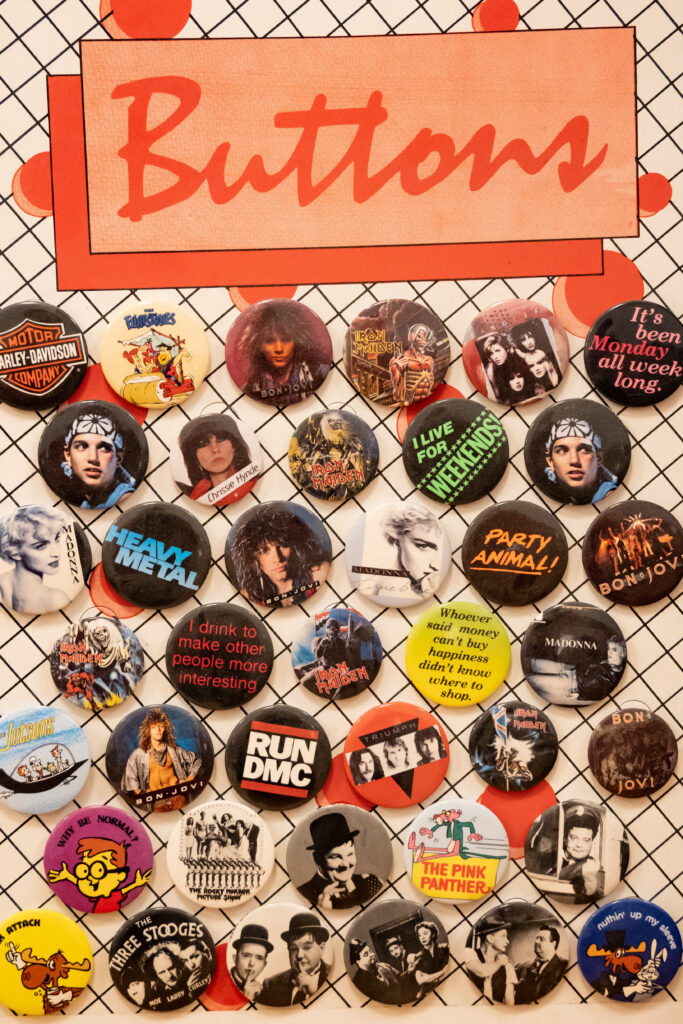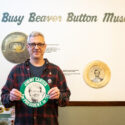Tucked away in the Logan Square neighborhood in Chicago lies a portal to the past: a one-of-a-kind museum that chronicles centuries of history in one room. Home to over 30,000 pins in a variety of shapes, sizes, colors and purposes, the Busy Beaver Button Museum is the world’s only pin-back button museum.
The museum was founded in 2010 by brother-sister duo Christen and Joel Carter. The siblings started the museum as a way to catalog their growing collection of buttons and share their knowledge with the public.
“Buttons are incredible communication tools,” Joel Carter said. ”It can be tied to an event, or it can be tied to awareness, or just ‘I like this brand of beer.’ It’s a personal thing that you wear, and it shows what you like, what your interests are.”

Walking into the museum, visitors are greeted with a split space. The museum itself is housed in the same building as the Busy Beaver Button Company, a button-making business with clients from politicians to rockstars. But on the museum side, there’s a unique space focused on the history of buttons and their uses over time.
Spanning from the year 1896 — when the pin-back button was first patented — to present day, the Button Museum is organized by category. Areas are filled with buttons from events, brands, political and social movements, bands and artists, sports, Chicago history, silly phrases and more. Curators and researchers at the museum catalog the history and context of each button before it’s added to the online database or the showfloor. No two buttons in the collection are alike.
“I would say there’s something for everyone,” Joel Carter said. “There’re so many categories and different types of buttons, different types of art, different types of messages, that I think someone would find something that either interests them or sparks a memory and takes them back.”
An important part of the collection are the pins created to support influential social and political movements. They span back a century. In their assortment, the museum showcases buttons for causes including the campaign for women’s suffrage, Martin Luther King Jr’s 1963 March on Washington, Harvey Milk’s campaign for city supervisor, the “Silence = Death” AIDS awareness campaign and Barack Obama’s presidential inauguration.
Unlike posters or advertisements, buttons were, and still are, worn by individuals. The existence of each button represents someone who believed enough to proudly wear its message on their chest.
For Joel, the pins are history on both a personal and a public level.
“I think they’re really good timestamps that you can look back on and say, ‘Oh yeah, I remember that movement of a certain age,’ ‘I remember that movie.’ Everyone’s got things that they can relate to,” he said.

The museum also has a slew of niche buttons that represent events that might otherwise have been lost. Buttons representing the 1993 Brookfield Zoo Parents, the 2010 Chicago Vision Walk, Visiting Morris the 9 Lives Cat and a ‘good luck’ button for Miss DC 2006 are all found in the collection. While these events may seem innocuous now, they were meaningful enough to warrant a button at one time or another.
And that’s perhaps the best thing about the museum: it showcases how pins have been used to express ideas, emotions and personal interests. And since more buttons are always being made, the museum will only continue to expand, cataloging our ever-changing obsessions.
“I see it just growing in numbers as far as both actual and digital,” Joel Carter said. “And I see maybe it getting its own space sometime in the future where it’s independent of the button factory.”
And, of course, when that happens, there will be a pin to commemorate it.

